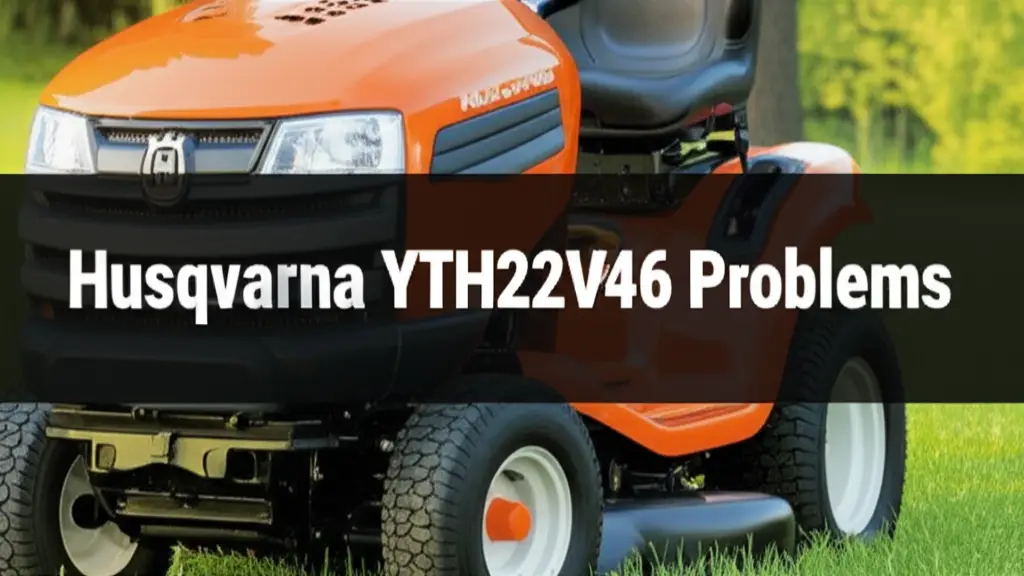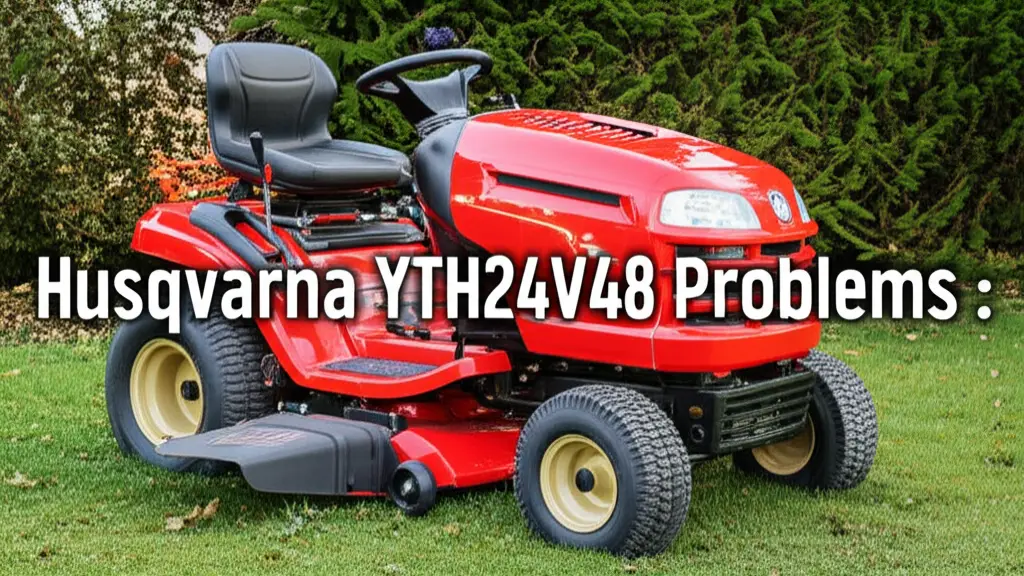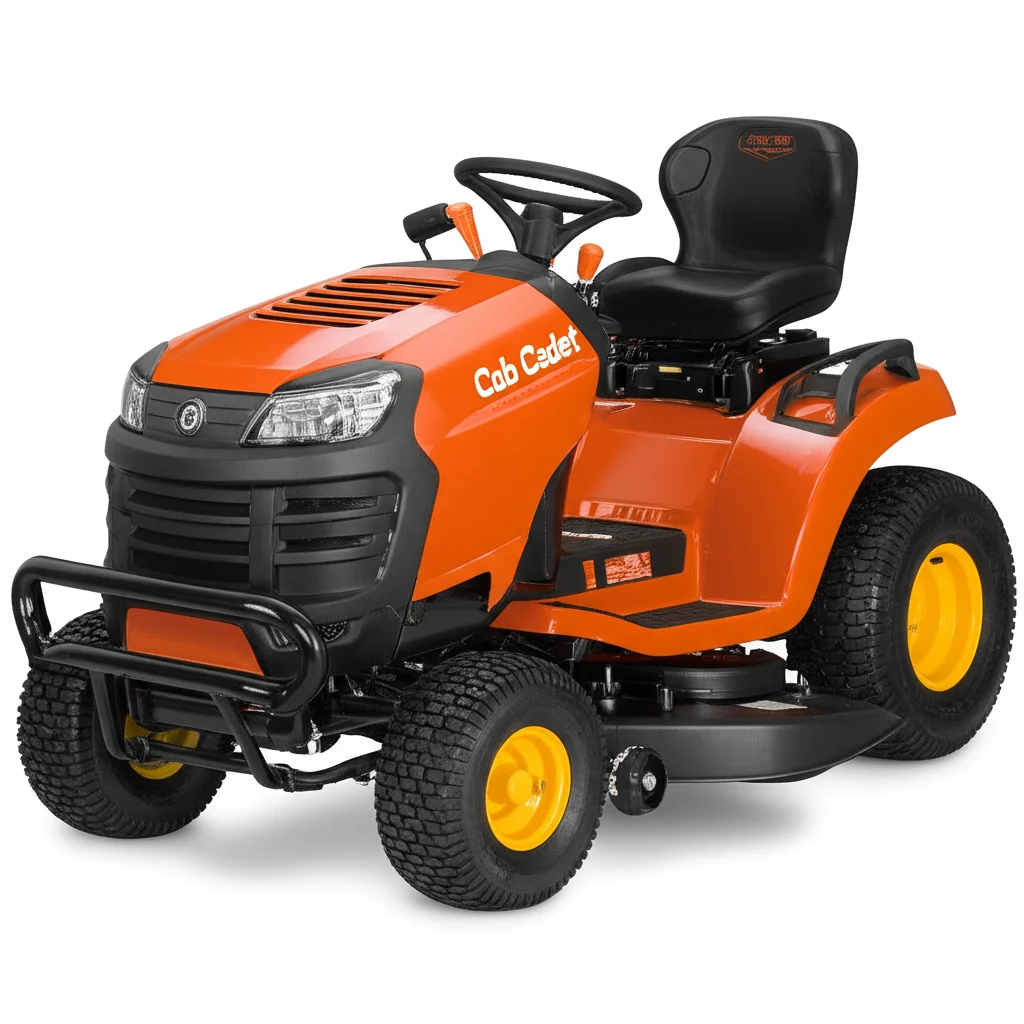· Riding Mower Problems · 12 min read
Cub Cadet 2518 Problems

Key Takeaways
- The Cub Cadet 2518 garden tractor commonly experiences issues with starting, electrical systems, transmission, and steering
- Regular maintenance can prevent many common problems
- Most electrical and ignition issues can be resolved with proper diagnostics
- Transmission problems often require professional attention
- Uneven cutting is typically fixable through proper deck leveling and blade maintenance
The Cub Cadet 2518 garden tractor is a popular choice for homeowners with larger properties, but like any mechanical equipment, it can develop various issues over time. The most common problems include starting difficulties, electrical malfunctions, transmission failures, steering problems, and cutting inconsistencies. Many of these issues can be diagnosed and resolved with proper troubleshooting and maintenance.
Common Starting Issues with Cub Cadet 2518
Starting problems are among the most frequently reported issues with the Cub Cadet 2518 model. When your tractor refuses to start or struggles to turn over, it can be incredibly frustrating, especially when you have yard work waiting to be completed.
Ignition System Problems
The ignition system is often the culprit behind starting difficulties. Many Cub Cadet 2518 owners report issues with the ignition switch failing over time. Symptoms include:
- Tractor not responding when the key is turned
- Intermittent starting issues
- Need to jiggle the key to get a response
The fix typically involves replacing the ignition switch, which is a relatively straightforward repair that most homeowners can tackle themselves. The replacement switch usually costs between $20-40, making it an affordable fix.
Battery and Charging Issues
Another common starting problem relates to the battery and charging system. The Cub Cadet 2518 uses a 12-volt battery that can fail after 2-3 years of use. Signs of battery problems include:
- Slow cranking when starting
- Lights dimming when attempting to start
- Complete failure to turn over
Testing the battery with a multimeter can confirm if it’s holding a charge. If the voltage reads below 12 volts, it’s likely time for a replacement. Additionally, check the charging system, as a faulty voltage regulator can prevent the battery from charging properly during operation.
Fuel System Complications
Fuel-related issues can also prevent your Cub Cadet 2518 from starting. The carburetor can become clogged with old fuel, especially if the mower has been stored for extended periods without proper winterization. Common symptoms include:
- Engine sputtering or not starting at all
- Rough idle or inconsistent performance
- Strong smell of fuel without proper ignition
Cleaning the carburetor or rebuilding it with a kit can often resolve these issues. For persistent problems, replacing the carburetor entirely might be necessary, which typically costs around $50-100 for parts.
Electrical System Failures in the Cub Cadet 2518
The electrical system in the Cub Cadet 2518 can develop various issues over time, affecting multiple aspects of the tractor’s operation. Understanding these problems can help you identify and address them quickly.
Faulty Safety Switches
The Cub Cadet 2518 features several safety switches designed to prevent operation under unsafe conditions. These include:
- Seat safety switch
- PTO (Power Take-Off) switch
- Brake safety switch
When these switches malfunction, they can prevent the tractor from starting or cause it to shut down unexpectedly. Many owners report issues with the seat safety switch in particular, which shuts off the engine if it doesn’t detect an operator in the seat.
Testing these switches with a multimeter can identify if they’re operating correctly. Replacement switches typically cost $15-30 each and can significantly improve reliability.
Wiring Harness Issues
Over time, the wiring harness on the Cub Cadet 2518 can develop problems due to vibration, exposure to elements, and normal wear. Common issues include:
- Corroded connections
- Frayed or broken wires
- Loose connectors
These problems often manifest as intermittent electrical issues, such as lights flickering, gauges not working properly, or the engine cutting out unexpectedly. Inspecting the wiring harness for damage and repairing or replacing damaged sections can resolve these issues.
Fuse and Relay Problems
The fuse box and relays protect and control various electrical components in the Cub Cadet 2518. When these components fail, specific systems may stop working. Always check the fuses first when troubleshooting electrical issues, as they’re the easiest and least expensive components to replace.
Transmission Problems That Plague the Cub Cadet 2518
Transmission issues are among the most serious problems that can affect your Cub Cadet 2518, as they directly impact the tractor’s ability to move and operate effectively.
Hydrostatic Transmission Failures
The Cub Cadet 2518 uses a hydrostatic transmission system that allows for smooth speed control and direction changes. However, this system can develop problems, including:
- Difficulty changing speed
- Sluggish response to pedal input
- Complete loss of forward or reverse motion
These issues often stem from low hydraulic fluid levels, air in the system, or worn internal components. Regular maintenance, including fluid changes every 200 hours of operation, can prevent many transmission problems.
For more information about hydrostatic transmission issues, check out this guide on Cub Cadet transmission problems.
Belt Issues
The drive belt connects the engine to the transmission and can wear out over time. Signs of a failing belt include:
- Slipping during operation
- Squealing noises
- Reduced power when climbing inclines
Replacing the drive belt is a maintenance task that should be performed every 100-200 hours of operation or when signs of wear become evident. The replacement process requires removing several components to access the belt, so consulting the service manual is recommended.
Differential Problems
The differential allows the wheels to turn at different speeds when making turns. Problems with the differential can cause:
- Difficulty steering
- Uneven power distribution to wheels
- Grinding or clicking noises when turning
Differential issues often require professional attention, as they involve complex internal components. Regular lubrication and avoiding excessive strain can help prevent these problems.
Steering System Complications
The Cub Cadet 2518 features a steering system that can develop various issues over time, affecting maneuverability and overall operation.
Synchro Steer Technology Issues
Some Cub Cadet models incorporate Synchro Steer technology, which combines the steering wheel with differential control for improved maneuverability. Common issues include:
- Inconsistent steering response
- Difficulty making tight turns
- Steering wheel becoming stiff or loose
Understanding how Cub Cadet’s steering systems work can help diagnose problems. For more information on this technology, see this article on how Cub Cadet Synchro steer works.
Steering Gear Problems
The steering gears can wear down or become damaged over time, leading to:
- Play or looseness in the steering wheel
- Grinding noises when turning
- Increased effort required to steer
Regular lubrication of steering components can prevent premature wear. When steering gears do fail, replacement parts typically cost between $50-150, depending on the specific component needed.
Steering Column Issues
Problems with the steering column can also affect steering performance:
- Binding or sticking when turning
- Excessive vibration
- Complete steering failure
Inspecting the steering column for damage and ensuring proper alignment can resolve many of these issues. In some cases, replacement may be necessary.
Cutting Performance Issues
The primary purpose of your Cub Cadet 2518 is to cut grass effectively, so problems with cutting performance can be particularly frustrating.
Uneven Cutting Problems
Many owners report issues with uneven cutting, which can result from:
- Improperly leveled mower deck
- Bent or damaged blades
- Uneven tire pressure
Properly leveling the mower deck according to the manufacturer’s specifications can resolve most uneven cutting issues. This process involves adjusting the deck height at multiple points to ensure it’s parallel to the ground.
Blade Engagement Problems
The PTO system engages the cutting blades, and problems with this system can prevent proper operation:
- Blades not engaging when the PTO is activated
- Blades stopping unexpectedly during operation
- Unusual noises when engaging the blades
If your Cub Cadet 2518 shuts off when engaging the blades, it could indicate a problem with the PTO clutch or safety switches. This is a common issue that many owners experience.
Deck Vibration and Noise
Excessive vibration or noise from the cutting deck can indicate:
- Bent or damaged blades
- Loose deck components
- Failed spindle bearings
Regular inspection and maintenance of the cutting deck, including blade balancing and spindle lubrication, can prevent these issues and extend the life of your equipment.
Engine Problems in the Cub Cadet 2518
The engine is the heart of your Cub Cadet 2518, and problems here can affect every aspect of operation.
Overheating Issues
Engine overheating can cause significant damage if not addressed promptly. Common causes include:
- Clogged cooling fins
- Low oil levels
- Excessive load during operation
Regular cleaning of the cooling system and maintaining proper oil levels can prevent most overheating issues. If your Cub Cadet 2518 consistently runs hot, check for debris around the engine and ensure the cooling fins are clean.
Oil Leaks and Consumption
Oil leaks or excessive oil consumption can indicate:
- Worn gaskets or seals
- Damaged oil lines
- Internal engine wear
Addressing oil leaks promptly can prevent more serious engine damage. Minor leaks can often be fixed by replacing gaskets, while more significant leaks might require professional attention.
For more information about engine-related issues, visit this page on Cub Cadet EFI engine problems.
Performance and Power Issues
Reduced engine performance or power can result from:
- Dirty air filter
- Clogged fuel filter
- Carbon buildup in the combustion chamber
Regular maintenance, including filter replacements and occasional carburetor cleaning, can maintain optimal engine performance. If your Cub Cadet 2518 is slowing down during operation, these factors should be checked first.
Maintenance Tips to Prevent Common Problems
Preventive maintenance is the best way to avoid many of the common problems associated with the Cub Cadet 2518.
Regular Service Schedule
Following a consistent maintenance schedule can significantly extend the life of your tractor:
- Change oil every 50 hours of operation
- Replace air filter annually or more frequently in dusty conditions
- Check and adjust valve clearance every 200 hours
- Lubricate all moving parts according to the service manual
Proper Storage Practices
How you store your Cub Cadet 2518 when not in use can significantly affect its reliability:
- Clean the tractor thoroughly before storage
- Add fuel stabilizer to prevent carburetor issues
- Disconnect the battery or use a maintainer during long-term storage
- Store in a dry, covered location
Troubleshooting Electrical Issues
For persistent electrical problems:
- Keep battery terminals clean and connections tight
- Test the charging system regularly
- Use dielectric grease on electrical connections
- Replace corroded wires and connectors promptly
Following these maintenance practices can prevent many common problems and ensure your Cub Cadet 2518 provides years of reliable service.
Comparing the Cub Cadet 2518 to Similar Models
Understanding how the 2518 compares to other models can help put its problems in perspective and provide context for owners and potential buyers.
Cub Cadet 2518 vs. 2186
The Cub Cadet 2186 is another popular model that shares some similarities with the 2518. However, there are notable differences:
- The 2186 typically experiences fewer transmission issues
- The 2518 generally has better cutting performance
- Both models share similar electrical system vulnerabilities
For more information about the 2186, see this article on Cub Cadet 2186 problems.
How the 2518 Compares to Newer XT Models
Cub Cadet’s newer XT series has addressed some of the common issues found in older models like the 2518:
- Improved electrical systems with better waterproofing
- Enhanced transmission durability
- More reliable PTO engagement systems
However, some owners still prefer the simplicity and repairability of older models like the 2518. If you’re experiencing issues with a newer model, check out this guide on Cub Cadet XT2 problems.
Frequently Asked Questions
Why does my Cub Cadet 2518 shut off when I engage the blades?
This commonly occurs due to a failing PTO clutch, loose electrical connections, or a malfunctioning safety switch. Check the seat safety switch first, as it’s designed to shut off the engine if weight is lifted from the seat. Also inspect the PTO clutch for signs of wear or damage, and ensure all electrical connections are clean and tight.
What causes the Cub Cadet 2518 to slow down during operation?
Slowing down typically indicates transmission issues, fuel delivery problems, or an engine under excessive load. Check the transmission fluid level and condition, clean or replace the fuel filter, and ensure the air filter is clean. If the problem persists, the drive belt may be slipping or the hydrostatic transmission may need servicing.
How does Cub Cadet Synchro steer work?
Cub Cadet’s Synchro steer technology combines traditional steering wheel control with automatic differential engagement. When turning the wheel, the system automatically adjusts power to the wheels, making tight turns easier and reducing the chance of turf damage. This system uses sensors and a control module to determine the appropriate wheel speed based on steering input.
Why is my Cub Cadet 2518 lawn mower not cutting evenly?
Uneven cutting is typically caused by an improperly leveled deck, dull or damaged blades, or uneven tire pressure. Check that all four tires are inflated to the recommended pressure, then level the deck according to the manual specifications. If the problem persists, inspect the blades for damage or wear and replace them if necessary.
What are the most common electrical problems with the Cub Cadet 2518?
The most common electrical issues include battery failure, corroded connections, faulty safety switches, and damaged wiring. Regular inspection of the electrical system, keeping connections clean, and promptly addressing any signs of corrosion can prevent many of these problems. Testing the charging system annually can also identify potential issues before they cause failures.
How long should a Cub Cadet 2518 transmission last?
With proper maintenance, the hydrostatic transmission in a Cub Cadet 2518 should last 1,500-2,000 hours of operation. Regular fluid changes every 200 hours, avoiding excessive loads, and allowing the transmission to warm up before heavy use can significantly extend its lifespan. Signs of transmission wear include sluggish response, difficulty changing direction, and unusual noises.
Are Cub Cadet 2518 parts still readily available?
Yes, despite being an older model, parts for the Cub Cadet 2518 remain widely available through dealers, online retailers, and aftermarket suppliers. The tractor’s popularity has ensured continued parts support, though some specialized components may require ordering from dedicated Cub Cadet parts suppliers. Many parts are also interchangeable with other similar models in the Cub Cadet lineup.
Final Thoughts
The Cub Cadet 2518 garden tractor remains a popular choice for homeowners with larger properties due to its durability and performance capabilities. While it does experience common issues with starting, electrical systems, transmission, and cutting performance, most problems can be prevented through regular maintenance and promptly addressed when they occur.
Understanding the typical problems associated with this model empowers owners to perform basic troubleshooting and maintenance, potentially saving hundreds of dollars in repair costs. For more complex issues, consulting with a certified Cub Cadet technician is recommended to ensure proper diagnosis and repair.
By following the maintenance tips outlined in this article and addressing minor issues before they become major problems, your Cub Cadet 2518 can provide reliable service for many years to come. Remember that preventive maintenance is always less expensive and less frustrating than reactive repairs.
Whether you’re a current owner troubleshooting an issue or a potential buyer researching this model, understanding these common problems can help you make informed decisions about purchase, maintenance, and repair of your Cub Cadet 2518 garden tractor.



